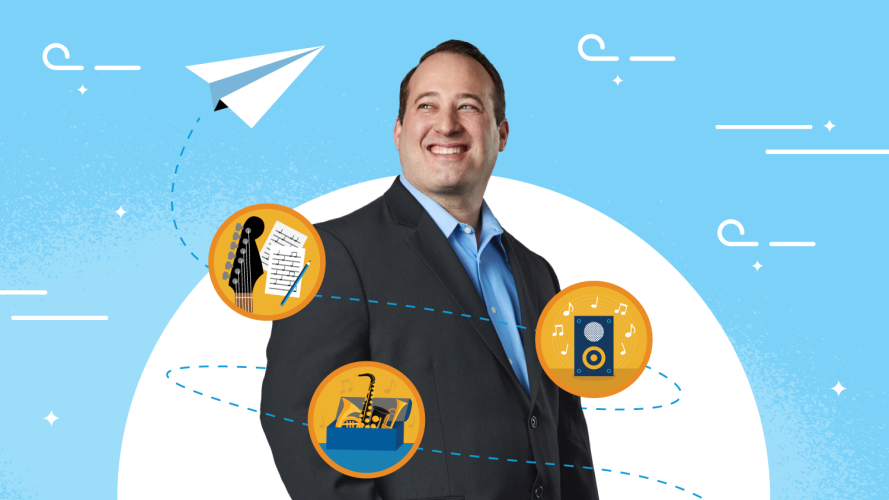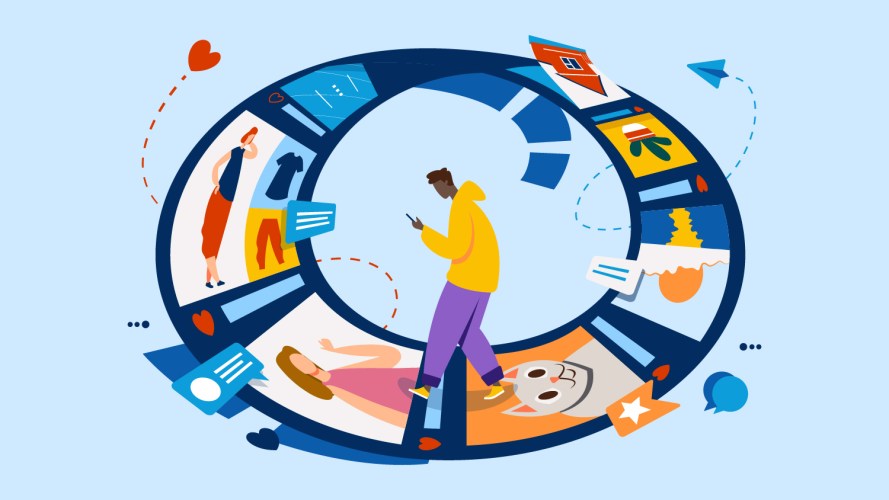Need An Email Engagement Boost? Expert Advice From Trailblazers

The days of "batch and blast" are over. Here's how you can win with personalization and using your data intelligently.

Michael Wright
Hear from the experts
- How should you consider email open metrics?
- How can you make the most of your click data?
- Why is personalized content important?
- What are the next steps for email engagement?
When I first got into the email marketing space in 2010, the term “batch and blast” was still used to describe email strategy — not exactly focusing on email engagement. AOL was still a player in the mailbox provider game. And despite being six years old at that point, DomainKeys Identified Mail (DKIM) authentication still hadn’t been widely adopted.
Things have changed a lot with email engagement over the last 14 years. DKIM is no longer a ‘best practice’ but a requirement for ensuring mail reaches the subscriber inbox. AOL is still around, but it’s now part of Yahoo, and serves as the inspiration for many memes.
Perhaps the most important change is that the concept of “batch and blast” is no longer considered an effective marketing strategy. Today’s subscribers expect so much more from the companies they do business with.
Blaze your trail today
Ready to take the next step in your career? Join the Marketing Trailblazer Community to connect with peers, discover new trends, and gain skills that will set you apart from the competition.



Personalization has become a must in email marketing. Sending relevant content to the subscriber inbox in a timely manner is the goal of the modern marketer, with the hope of driving engagement in the form of a purchase or sustained interest. Positive email engagement can look different to different marketers. Some are happy to see an open rate of over 20% on a campaign, while others may consider a click rate higher than 10% to be the mark of success.
I reached out to the Marketing Trailblazer Community for some feedback around the new look of monitoring email engagement rates and how to be sure your content is getting the results your company needs.
How should you consider email open metrics?
We’ve seen a lot of talk over the last couple of years, and especially since Apple MPP rolled out, about not being able to trust open rates. Despite this, it seems to be the most common method of deriving engagement across most email service providers (ESPs).
Here’s what our Trailblazers had to say about the value of the email open and how and how to make the most of the data you can track:
Lakesha Holloway, digital director, Atrium Health:

“Understanding the nuances of email engagement metrics, particularly open rates in the era of Apple’s Mail Privacy Protection (MPP), is crucial for email marketers. While open rates remain a KPI we keep our eyes on, it’s essential to note that it may not always reflect direct subscriber interactions, due to privacy measures.
For new marketers, I recommend focusing on leveraging open rates as a directional indicator rather than an absolute measure of engagement. Consider a holistic approach by analyzing click-through rates, conversions, and other behavioral data to gain deeper insights into your subscribers interactions. Additionally, optimize email content, subject lines, and send times based on Einstein predictions. Aim to enhance overall engagement through meaningful connections with your audience.”
Casey Harral, marketing operations analyst, Idaho Central Credit Union:
“It’s crucial to understand the value of an email open because it shows that people are interested in your content. While Apple MPP and caching make an open-rate-only strategy unreliable, it’s still a huge piece of the puzzle.

To make the most of open data, focus on analyzing not just the open rates but also actions like clicks and conversions. This info can help you refine your email content, subject lines, and timing for maximum impact. Constantly monitor that data to develop your strategies. By basing your insights on both email opens and its associated metrics, you can increase your brand loyalty, ultimately driving improved engagement and ROI to your business.”
How can you make the most of your click data?
The prevalence of security filters also means that a click may or may not be real. There are a lot of creative ideas out there around discerning non-human interactions (NHI) from those of real subscribers. Common methods include:
- Comparing time of open to time of click – if they both happen at/near the same time, especially immediately following time of send, it’s likely an NHI.
- Including hidden URLs that a subscriber wouldn’t actually see/click, but a filter NHI would.
Both of these require additional time, effort, and customization to reporting that not every marketer has the bandwidth or resources to implement. Here are our Trailblazers’ tips on making the most out of click data:
Harral:
“Monitor your data consistently to make the most of your click metrics. With that data, you can establish a baseline expectation of how your content will perform. This can be adopted through implementing tracking techniques and fostering a genuine connection with your contacts. This data will help to refine your overall strategy and lead to significant results.”

Jen Kazin, account engagement (Pardot) consultant, Greenkey:
“Unfortunately, due to the rise of email bots, click data is getting harder to trust. Send prospects who click on your email to a landing page to get the desired call-to-action. For example, when prospects click on your email, they should go to a landing page with a single call to action, such as ‘Download Content’ or ‘Choose Interest.’
This creates a two-click scenario (bypassing the bot and security filters), and marketers only monitor the landing page click. Or marketers can track whether the prospect has viewed the landing page.”
Taking NHI opens and clicks into consideration, here are our Trailblazers’ suggestions on the best ways to track email engagement:
Holloway:
“Tracking engagement isn’t always straightforward, especially with bots and pre-downloaded images muddying the waters. But here’s the deal: focusing solely on open rates and basic click counts won’t cut it anymore.
To truly gauge engagement, you must get creative. Think beyond the surface metrics. Dive deep into behavioral patterns, use advanced tracking tools like UTM parameters, along with segmentation and personalization. It’s all about understanding your audience on a deeper level and adapting your approach accordingly.
Sure, it’s a bit of a wild ride, but by staying agile and keeping an eye on quality metrics, you’ll navigate through the noise and uncover the insights that truly matter for your email program.”
Kazin:
“Bots are a nightmare for marketers because they can skew engagement reports and trigger engagement-based automation intended for the email recipient.
Marketers need to raise the bar. Don’t score off high-level email activity (opens and clicks). Instead, track stronger prospect “engagement.” The best marketers I encounter don’t use email click data. They look for more decisive prospect actions like form submissions, webinar registrations, content syndication downloads, or form submissions on paid media.”
Build your deliverability strategy now
In this free webinar, our experts will walk you through key email deliverability terms, core strategies, and how to make sense of the metrics.



Why is personalized content important?
I recently blogged about the subscriber lifecycle and the need to have an active list hygiene strategy in place. You need to reward your actively engaged subscribers that deliver the best return on investment and to re-target and personalize messages for those who are lapsing.
But it’s just as crucial to know when to let go of unengaged subscribers. This improves your results and keeps you in the good graces of the mailbox providers. It decreases bounces, increases email engagement and helps you avoid spam complaints.
We asked our Trailblazers’ for their tips or success stories around targeted or personalized campaigns and the impact they can have on a sender’s reputation or business in general:
Holloway:
“List hygiene and targeted, personalized campaigns go hand in hand in achieving inbox success. Keeping a clean email list is essential for maintaining a positive sender reputation and ensuring your messages land in the right inboxes. But it’s not just about the numbers; it’s about nurturing relationships with engaged subscribers through tailored content.”
Great content helps drive email engagement and ROI. Personalization is a must, but remembering the fundamentals is just as crucial to implement a great campaign.”
Harral:
“We’ve built a strong brand reputation because we pursue opportunities to connect with our customers. That wouldn’t be possible without a clear strategy, particularly with our list hygiene and campaign execution.
Our campaigns that include personalization foster higher engagement, stronger customer relationships, and enhanced brand perception. As an added bonus, they can prevent your email sends from becoming spam. All good things come with a balance, though. Don’t over-personalize to the point that it gets overwhelming.
In email specifically, we always start with an attention-grabbing subject line that has an excited tone. Then we provide short, digestible content that leads to in-depth information on our site. By structuring our campaigns with bite-sized content first and detailed content last, we’ve successfully built a strong digital strategy, despite the unique challenges of our industry.”
What are the next steps for email engagement?
The message I’ve been trying to deliver to readers for the last year or so now is everything is connected: email sender guidelines and best practices, the subscriber lifecycle, and list hygiene. Sending highly personalized content to a highly engaged audience and taking corrective actions based on what your subscribers are telling you helps maximize ROI while also keeping your reputation pristine.
The new look of email engagement requires so much more than just collecting addresses and hitting send. The era of “batch and blast” is behind us.
As Harral said: “Email engagement is built over time, not overnight. Don’t underestimate the power of a strong brand reputation. Digital marketing is always evolving, so make sure you’re adaptable and ready for change. Have fun and enjoy the ride!”
Make sure your emails reach their destination
Learn how Marketing Cloud Engagement integrates all of your campaigns and manages your email sender score with a single platform.


























